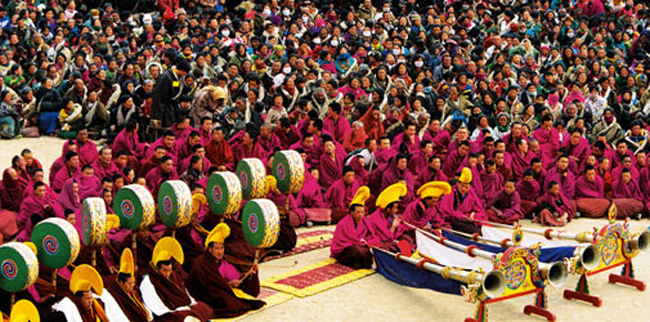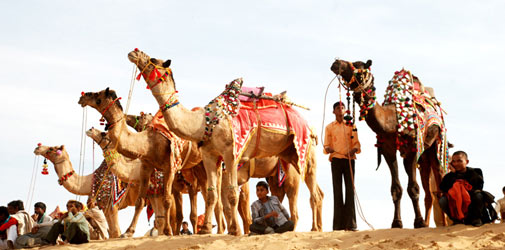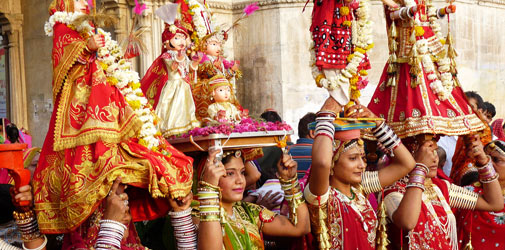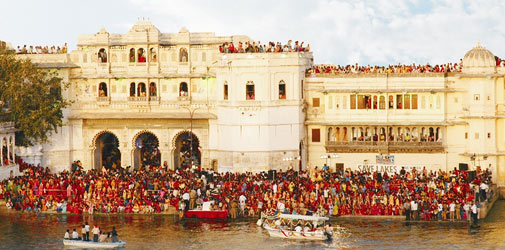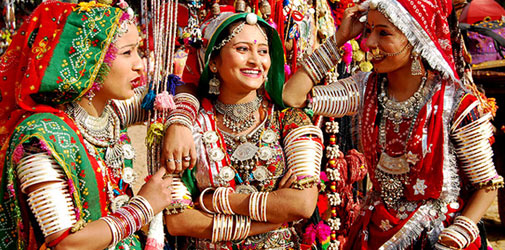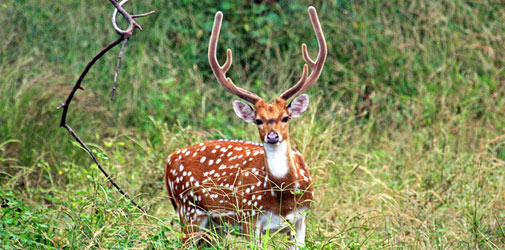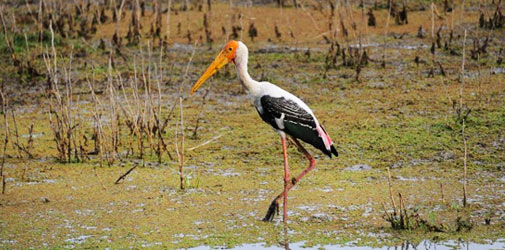Fairs and Festivals
Fairs and festivals in Ladakh region have been deeply rooted and left a social impact on its natives. These fairs and festivals provide opportunities for the people to interact and enjoy amongst themselves. Due to the extreme cold weather and heavy snowfall in the winter season, most natives have relatively more idle time on their hands and hence, most of the Gompas or monasteries choose this time for their annual festivals, though there are summer festivals too. Lamas, the religious teachers of Dharma, dressed in colorful robes and masks perform dance dramas and mimes that often symbolize the victory of the good over evil and other aspects of the religion. These festivals serve as occasions to celebrate and participate in merry-making activities, such as dance, music, shopping and feasting.
Hemis Festival
The biggest and most popular monastic festival among the tourists, Hemis Festival usually falls in June or July. It is dedicated to the deity Padmasambhava. The highlight of the festival is the unveiling of a huge thangka (religious icon) once every 12 years. It is considered to be the Gompa’s greatest treasure and is exhibited either as a painting or embroidered on cloth. In 2004, this thangka was exhibited. There are other monasteries that have their annual festivals in summers, such as Lamayuru, Phyang, Tak-tok and Karsha in Zanskar. Just like Hemis, Phyang also exhibits a gigantic thangka in its festival, the difference is just that it is conducted every year while in Hemis Festival, it is conducted once in twelve years.
Dosmoche Festival
Dosmoche is one of the New Year festivals of Ladakh. Celebrated in the second half of February in Leh, it is said to be the festival of the scapegoat. In this festival, a great wooden mast is set up outside Leh and is adorned with streamers and religious emblems. With the offerings of storma (ritual figures molded out of dough), they are then cast away into the desert or burnt. It is believed that these scapegoats carry away the evil spirits with them and the town is left clean and pure to welcome the New Year. The other New Year festival of the region is Losar festival. Other festivals that are celebrated at the same time as Dosmoche are Likir and Diskit festivals. Spituk, Chemrey, Stok, Thiksey and Matho monasteries also celebrate their annual festivals in winter, especially between November and March.
Losar Festival
One of the New Year festivals of Ladakh, Losar is celebrated for two weeks usually in the month of December or January. During this festival, Ladakhi Buddhists make offerings to their deities in Gompas as well as other shrines. The highlights of the festival are the ancient rituals and dance-dramas that stage fights between good and evil, dance of the Ibex deer and battles between the King and his ministers with music and dance. However, every year, the location and dates of the festival keeps changing.
Sindhu Darshan
This prospering festival is a recent introduction in 1997 and is organized by the Government of Jammu and Kashmir with the support of the Ministry of Tourism and Culture annually at Leh in the month of May or June. It promotes River Sindhu (or Indus) originating from Mansarovar in Tibet as a symbol of communal harmony and peaceful co-existence of myriad of cultures in India. It not only promotes tourism in the beautiful valleys of Leh and Ladakh but is also a tribute to the valiant soldiers who sacrificed their lives while fighting for their nation at Siachen, Kargil and other strategic points of war. This festival showcases performing arts of India and one of the rituals of the festival involves mingling of the waters of other mighty rivers of India in the Sindhu River. Various groups bring these waters from different states in India in the earthen pots, which are then immersed into the Sindhu River.
Ladakh Harvest Festival
The two-week long bright and colorful celebration of Ladakh, this harvest festival usually falls in September. Besides the music and folk dances, there are polo contests, archery contests, wedding celebrations and masked dances that add to the festivities of the festival. The final carnival parade that passes through Leh is worth watching. This festival is a kaleidoscope of the Ladakhi culture showcasing the blending of Central Asian, Tibetan and North Indian cultures and the art and handicrafts of the region.
